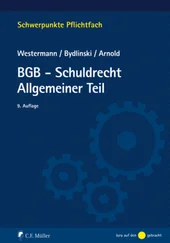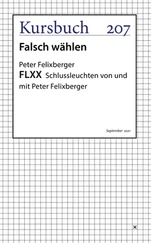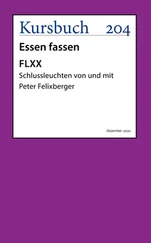They’d made slow progress since leaving the Mississippi, barely twenty-five miles in four hours. The backroads were muddy, washed out in places, and cut between steep hills covered with pine and scrub oak. The convoy had to make frequent stops as Army patrols fanned out in the dark looking for snipers.
During one halt, Elizabeth got out of the Humvee with Atkins. She told him what had happened the day before in the library annex, how someone had stolen her laptop computer from the equipment room.
“Any idea who it was?”
She shook her head. “I didn’t see his face.” She’d tried to take a discreet look at every man who worked at the earthquake center. She didn’t detect anything unusual in their behavior or attitude toward her.
“It could have been anyone,” she said.
“I don’t think so,” Atkins said softly. “For starters, maybe someone wanted to check your E-mail messages.”
“But why?”
“What if they wanted to see if you’ve messaged anyone about those cracks we saw at the dam.” Atkins said. “Find out how much you know about that and whether you’ve told anyone.” Cracking a computer password wasn’t all that difficult, especially for an expert. Atkins knew hackers who could do it in less than twenty minutes.
“Weston?”
“Or his friend Marshal,” Atkins said. “I could see either of them wanting to take a look at whatever data you’ve got on that computer. Go on a fishing expedition. For all we know maybe they wanted to download the zipped files you got from Doctor Prable. Take a close look at his data and see if they could find something they could use against you later. Work up a case to discredit you if you try to go public with what happened at the dam.”
Atkins took Elizabeth by the shoulders, holding her tightly as he looked into her light gray eyes, which held such intelligence.
He’d lost one woman he loved. Sara. They’d gone into that building in Mexico City and gotten separated. He couldn’t allow that to happen again.
“I want you to stay close to me when we go into that mine,” he said. “No matter what happens, stay close to me.”
NEAR KALER, KENTUCKY
JANUARY 20
7:50 A.M.
AS HE’D PROMISED, PRESIDENT NATHAN ROSS WAS already there when the convoy arrived at the Golden Orient. Atkins saw him standing near the main entrance, talking to a rugged-looking man wearing white coveralls and a yellow hard hat. The two were surrounded by Secret Service agents and paratroopers, who were nervously scanning the surrounding hills with binoculars and spotter scopes.
Helicopter gunships circled the ridges, swooping low, then pulling up and swinging around for another pass. Army patrols had spread out in force, looking for snipers. The mine was about thirty miles from the Tennessee border, 140 miles north of Memphis.
Steve Draper, the president’s science adviser, hustled over when he saw Atkins and Holleran get out of the Humvee. He looked grim.
“You’ll want to hear this,” he said. “It’s not good.”
The mine was just as Atkins remembered it. The large, gray metal building that housed the entrance didn’t appear damaged. It was a different story with the wooden tower that supported the massive wheel and counter weight that lowered the miners’ cage into the shaft. Leaning at a precarious angle, several of its support timbers had snapped in two. The adjoining tower and fly wheel, also badly damaged, operated the “skip shaft,” which powered the conveyor belt that brought out the coal.
With the towers out of service, two diesel engines had been flown in a day earlier to operate the elevator and power two huge fans that pushed fresh air into the shafts.
Atkins couldn’t shake the foreboding that had been building in him ever since the towers had first come into view over a rise in the hills. Ten stories tall, they stood there like dark monoliths. His eagerness to go on the offensive notwithstanding, descending into that mine would be the hardest thing he’d ever done. The risks of taking a nuclear weapon to its depths were secondary. Now that he was actually there, the thought of going underground was enough to trigger in him an overwhelming sense of claustrophobia, of being buried alive.
“John, what’s wrong?” said Elizabeth, staring at him. He looked white, faint. “Are you sick?”
“I just forgot how much I like this place,” he said. He tried to smile, but his dry lips felt like they’d split open. His morale wasn’t helped after he met the man who’d been brought in to lead the party into the Golden Orient.
Glen “Doc” Murray had arrived four hours earlier on a military flight from the Mine Safety Academy in Beckley, West Virginia, where he was chief instructor. He’d just returned from inspecting the mine with two other disaster specialists from the academy.
Murray was a big man, over six-foot-three, with a gaunt, sunburned face and a short white beard. He wore “bunker gear,” the heavy protective clothing of a firefighter. He took off his thick leather gloves and helmet and used a towel to wipe his face, which was caked with sweat and coal dust.
Murray nodded to the new arrivals and for a moment seemed to be sizing them up. He didn’t look impressed or reassured by what he saw.
“The earthquake broke things up pretty bad down there,” Murray said in a low-pitched Appalachian drawl. “Part of the man shaft has collapsed. Other sections run clear for a couple hundred feet, then break off where the earth shifted. The main air shaft is blocked in places.”
It was what Atkins had feared all along. The big quake had knocked the hell out of the mine. This was going to be more difficult than any of them had imagined.
Murray went on, “We got down about eight hundred feet and had to leave the man shaft and move over to one of the air shafts. We got down another five levels and cut back over to the skip shaft.”
Murray took out a small, spiral notebook and sketched what he was talking about. The mine descended twenty levels. Each level, separated by about one hundred feet, consisted of a series of three or four parallel tunnels, each about a thousand feet long. These were connected by intersecting or crosscut tunnels, forming a gridwork pattern on each level. The long tunnels provided access to the coal seams.
The coal was removed by the “room-and-pillar” technique. Miners cut or blasted it out of the seams, forming rooms that opened onto the tunnels. The crews left behind sufficient pillars to support the overlying rock, or “hanging wall.”
Murray drew four shafts. The first of these, the miners’ elevator, or “man shaft,” ran down the center of the mine and carried the work crews to and from the different levels. The coal conveyor, or “skip shaft,” was a tunnel that once housed a conveyor belt for carrying the cut coal up to the surface. The skip shaft tunnel slanted at a forty-degree incline and was about five feet high and six feet wide. The conveyor had long since been dismantled and removed. Like the rungs of a ladder, the coal tunnels ran between the skip shaft on one end and the main air shaft on the other.
There were two air shafts, which Murray drew in the notebook. The main one was virtually identical to the skip shaft in its dimensions and angle of incline. It was used to circulate air throughout the mine and also made a good escape route in an emergency. The secondary air shaft ran up vertically through the mine, roughly paralleling the elevator shaft. Carved out of the rock, the shaft was four feet wide.
“We took the skip shaft down to the eighteen-hundred-foot level,” Murray said, drawing the position where they’d halted and turned back. “The man shaft is completely gone, caved in. But there’s a deep crack that’s opened up at that level. A fissure. I couldn’t tell how far down it goes. We started picking up a little methane and decided to pull out. My hope is we can ventilate the shafts awhile longer and clear out some of that gas.” He closed the notebook and put it back into a pocket in his bib coveralls.
Читать дальше












